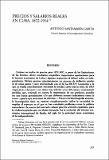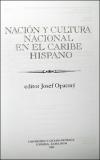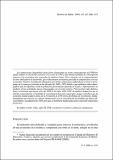Por favor, use este identificador para citar o enlazar a este item:
http://hdl.handle.net/10261/33189COMPARTIR / EXPORTAR:
 SHARE
BASE SHARE
BASE
|
|
| Visualizar otros formatos: MARC | Dublin Core | RDF | ORE | MODS | METS | DIDL | DATACITE | |

| Título: | Precios y salarios reales en Cuba, 1872-1914 |
Autor: | Santamaría García, Antonio CSIC ORCID | Palabras clave: | Cuba Prices Wages Economic History Independence 1872-1914 Precios Salarios Historia económica Independencia |
Fecha de publicación: | 2000 | Editor: | Centro de Estudios Políticos y Constitucionales (España) Universidad Carlos III de Madrid |
Citación: | Revista de Historia Económica - Journal of Iberian and Latin American Economic History 18 (2): 339-376 (2000) | Resumen: | [EN] In spite of the limitations of the data, the estimation of a Cuban price Índex for 1872-1897 offers an acceptable result, is an important contribution to its economic history and offers some replies for the controversia! Issue of its independence. These prices suffered a deflation process similar to the other countries and which took place much at the same time as in the US (economy to which the island was already very linked to). However, after the 1883 crisis, prices started to decrease at a much lower rate than those of sugar, causing economic losses that, given the importance of this product, can be a good approach to what indicators such as the income rate —there are not income estimations— could show. Opposite to other studies, our research has got a complementary character. It points out the necessity of enlarging the spectre of analysis of issues such as the tariff policy or the protection of Cuban market for Spanish goods, since evidence proves that the International economic system development in the 1880's and 1890's was the main economic reason for the Island's independence. [ES] Estimar un índice de precios para 1872-1897, a pesar de las limitaciones de las fuentes, ofrece resultados aceptables, importantes aportaciones para la historia económica de Cuba y algunas respuestas al debate sobre su independencia. Dichos precios experimentaron un proceso de deflación similar al de otros países y muy sincronizado con el de los EE UU (economía a la que ya estaba estrechamente vinculada la insular), pero tras la crisis de 1883 empezaron a decrecer a un ritmo muy inferior a los del azúcar, ocasionando pérdidas que, teniendo en cuenta la importancia de ese producto, pueden ser una buena aproximación a lo que deberían mostrar indicadores como la renta —para la que carecemos de cálculos—. Frente a la historiografía anterior, la investigación tiene un carácter complementario; indica la necesidad de ampliar el espectro en el que se han estudiado problemas como la política arancelaria o la reserva del mercado cubano para los artículos españoles, pues la evidencia prueba que, en última instancia, fue la evolución del sistema económico internacional de finales del siglo XIX la principal causa económica de la independencia. |
Descripción: | Gráficos; Cuadros; Apéndices; 37 p. | Versión del editor: | http://e-archivo.uc3m.es/bitstream/10016/2146/1/RHE-2000-XVIII-2-Santamaria.pdf | URI: | http://hdl.handle.net/10261/33189 | ISSN: | 0212-6109 |
| Aparece en las colecciones: | (EEHA) Artículos |
Ficheros en este ítem:
| Fichero | Descripción | Tamaño | Formato | |
|---|---|---|---|---|
| Precios-Santamaria.pdf | 1,62 MB | Adobe PDF |  Visualizar/Abrir | |
| PIB 1690-1959.pdf | 25,86 MB | Adobe PDF |  Visualizar/Abrir | |
| PIB 1690-2010.pdf | 140,15 kB | Adobe PDF |  Visualizar/Abrir | |
| Crecimiento economico Cuba republicana.pdf | 748,49 kB | Adobe PDF |  Visualizar/Abrir |
CORE Recommender
Page view(s)
793
checked on 22-abr-2024
Download(s)
1.371
checked on 22-abr-2024
Google ScholarTM
Check
NOTA: Los ítems de Digital.CSIC están protegidos por copyright, con todos los derechos reservados, a menos que se indique lo contrario.
